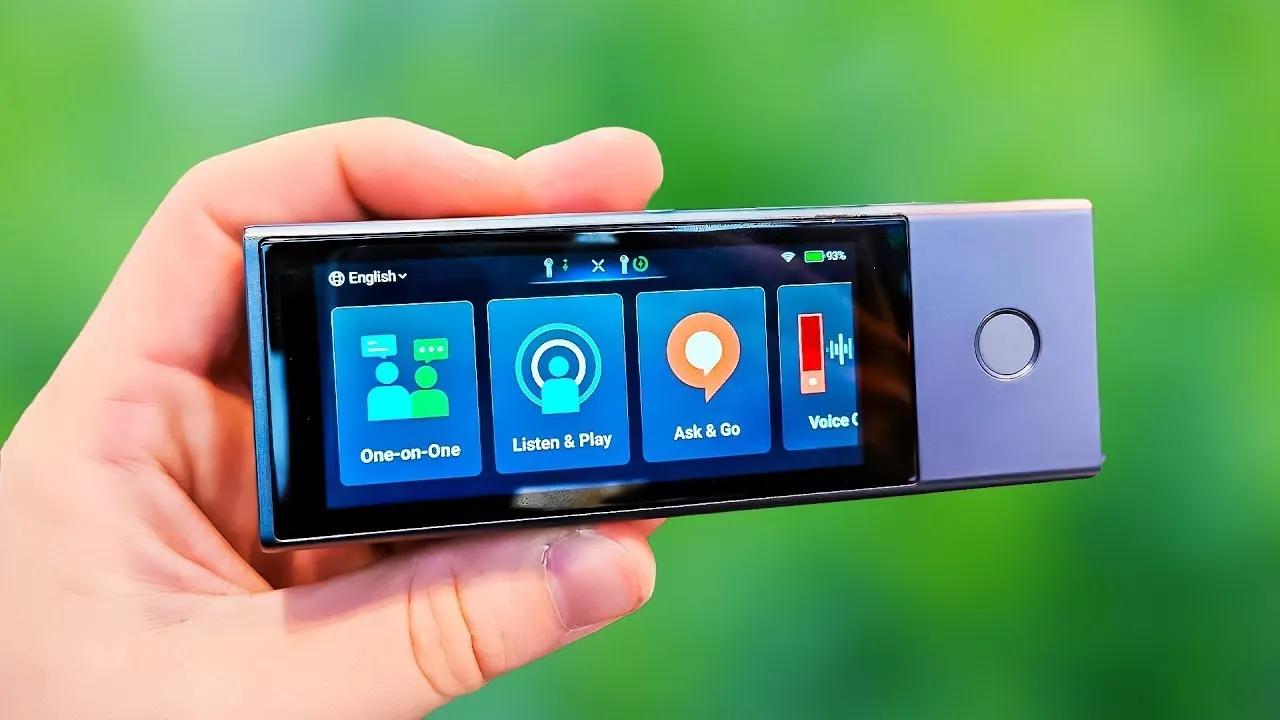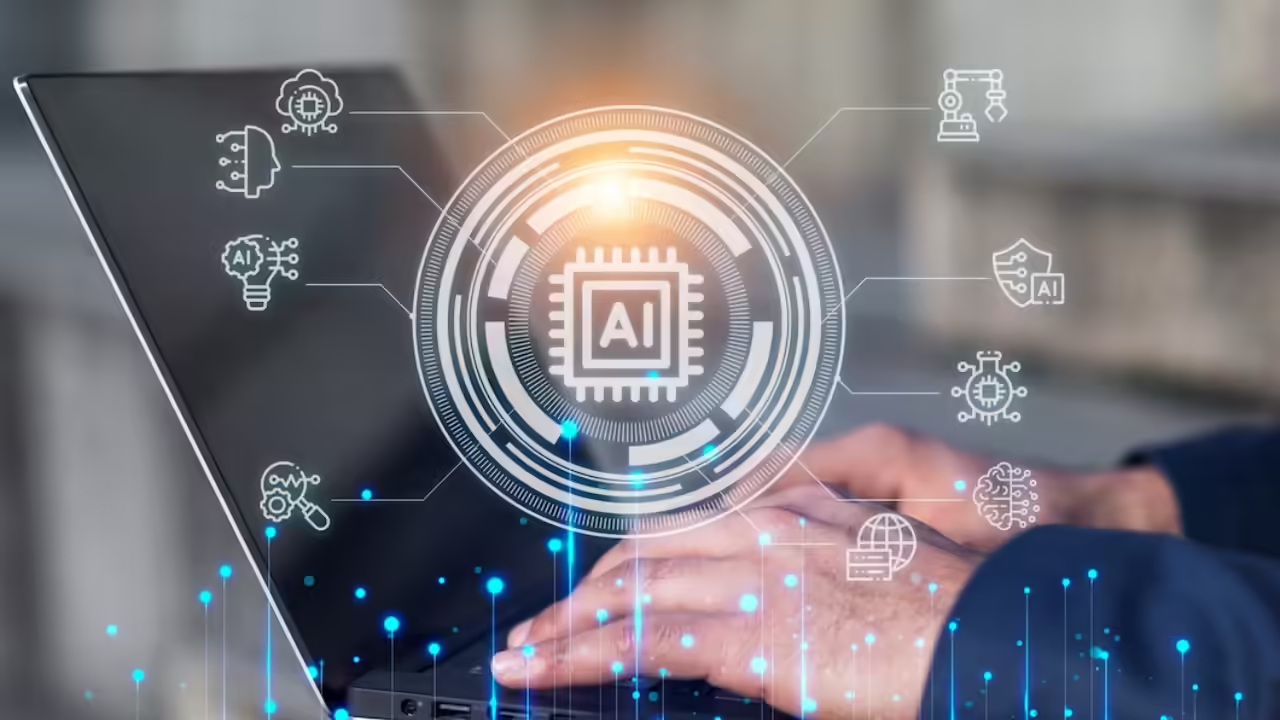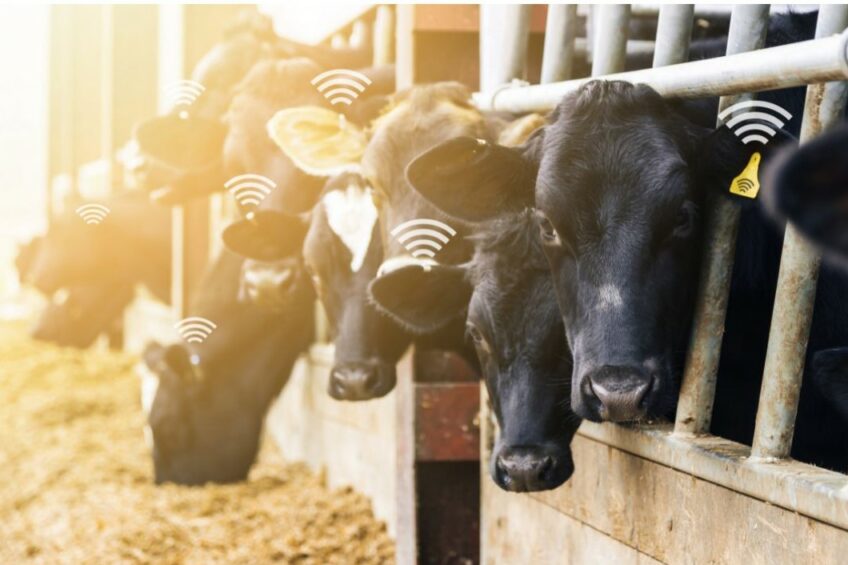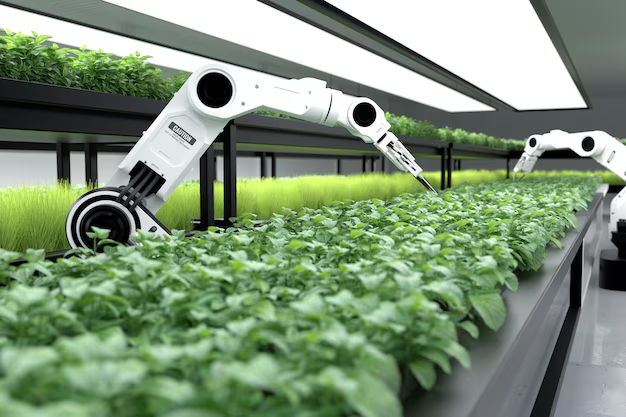1 Introduction: The Smart Home Revolution Enters Its Next Phase
The concept of the smart home has evolved dramatically from simple remote-controlled devices to intelligent ecosystems that anticipate our needs, enhance our security, and revolutionize how we interact with our living spaces. As we move through 2025, technological advancements have accelerated at an unprecedented pace, bringing forth a new generation of smart home gadgets that seamlessly integrate into our daily routines while offering unprecedented levels of convenience, efficiency, and customization. These innovations represent not just incremental improvements but fundamental shifts in how technology enhances our domestic environments, transforming houses into responsive, adaptive habitats that learn from and grow with their inhabitants.
The smart home market has matured beyond standalone devices to comprehensive ecosystems where gadgets communicate effortlessly with each other, creating synergistic relationships that multiply their individual capabilities. This evolution has been driven by breakthroughs in artificial intelligence, universal connectivity standards, and sustainable design principles that collectively address earlier limitations of smart home technology. Today's most advanced smart homes are characterized by their ability to automate complex sequences of actions, respond to environmental changes, and even predict residents' needs before they become apparent. The result is a living space that not only responds to commands but actively contributes to occupants' wellbeing, security, and quality of life through continuous, intelligent operation.
In 2025, we're witnessing the convergence of several key technological trends that are reshaping what's possible in residential environments. AI-powered predictive automation has moved from novelty to necessity, with systems capable of learning patterns and preferences to create truly personalized experiences. The adoption of the Matter connectivity standard has finally solved the compatibility issues that previously frustrated consumers, while advances in energy storage and management have made sustainable living more accessible than ever. Meanwhile, heightened focus on health-centric design has produced devices that actively monitor and improve occupants' physical wellbeing, creating environments that aren't just smart but therapeutic. These developments collectively represent the most significant transformation of domestic spaces since the widespread adoption of electricity, offering glimpses into a future where our homes become active partners in our daily lives rather than passive containers for our activities.
2 The Security Transformation: Intelligent Protection Inside and Out
The evolution of home security represents one of the most dramatic transformations in smart home technology, with 2025's offerings providing comprehensive protection that extends far beyond basic monitoring. Today's advanced security ecosystems combine multiple layers of AI-enhanced devices that work in concert to detect, assess, and respond to potential threats while providing homeowners with unprecedented peace of mind. The modern approach to home security has shifted from simple surveillance to intelligent threat prevention, with systems capable of distinguishing between normal activity and genuine concerns, thereby reducing false alarms while ensuring genuine threats receive appropriate responses.
At the forefront of this revolution are AI-powered security cameras equipped with sophisticated computer vision algorithms that analyze multiple variables simultaneously—including movement patterns, speed, time of day, lighting conditions, and historical activity data. These cameras can differentiate between animals, delivery personnel, and potential intruders with remarkable accuracy, as seen in models like the Aqara Camera Hub G5 Pro which provides sharp video, color night vision, and AI-powered motion detection and alerts. The Google Nest Cam floodlight has proven particularly effective in backyard security, offering bright LED illumination, easy magnetic adjustment, and Google's free AI object detection that continues to impress reviewers months after installation . For indoor monitoring, the Eufy S220 Indoor Cam delivers vivid high-resolution video with features typically found on pricier models, including local and cloud storage and automatic motion tracking.
Beyond cameras, the security ecosystem includes smart entry systems that revolutionize how we control access to our homes. The Arlo Video Doorbell (2nd Generation) remains a top choice with its clear HD or 2K video, 180-degree diagonal field of view, and flexible wired or wireless setup. For ultimate access control, smart locks like the Ultraloq Bolt Fingerprint offer multiple entry methods including voice, fingerprint, keypad, mobile app, or traditional keys, while the Aqara U200 Smart Lock stands out for its Matter integration, allowing seamless control and enhanced security features. Perhaps most impressively, connected community security networks are emerging as the next frontier in residential protection, with pilot projects in suburban areas reporting burglary reductions of up to 35% when AI-enabled security systems share appropriate alert data across neighborhoods .
3 The Matter Protocol Revolution: Finally Achieving Universal Compatibility
The introduction and widespread adoption of the Matter connectivity standard has fundamentally transformed the smart home landscape by solving the single most persistent frustration: lack of interoperability between devices from different manufacturers. Developed through collaboration between over 550 technology companies worldwide, Matter represents a unified approach to smart home connectivity that ensures devices work together seamlessly regardless of brand 9. This breakthrough has dramatically simplified the setup process for consumers, with early adoption statistics showing remarkable improvements in configuration success rates and significantly fewer connection errors compared to previous connectivity solutions.
At its core, Matter functions as a universal language that enables smart devices to communicate reliably across different ecosystems including Apple Home, Google Home, Amazon Alexa, and others. The protocol's certification program ensures rigorous compatibility testing, giving consumers confidence that their investments will work as intended within their chosen smart home environment. One of Matter's most significant advantages is its local control capability—devices communicate directly within the home network rather than relying on cloud servers, resulting in faster response times and continued functionality even during internet outages 9. This architecture not only improves performance but also enhances privacy and security by keeping more data within the home environment.
The practical benefits of Matter adoption are most evident in simplified home management through Matter-enabled control hubs. These systems allow users to create personalized scenes that coordinate multiple devices simultaneously with a single command—imagine pressing one button to adjust your evening ambiance with lights dimming, window shades lowering, and music beginning to play in perfect harmony. Products like the AiDot Linkind Wi-Fi Matter Smart Light Bulb demonstrate this principle in action, featuring built-in Wi-Fi and Matter support for easy connection to any major smart home platform while offering 16 million colors and custom effects. For Matter to function fully, especially with Thread devices, a compatible hub is required, such as those offered by Google Home with built-in Thread border routers that seamlessly connect both Wi-Fi and Thread devices over the home network.
4 Energy Management and Sustainability: Smart Solutions for Efficiency and Independence
The smart home's role in energy management has evolved from simple monitoring to active optimization and even generation, with 2025's technologies enabling unprecedented energy independence and environmental responsibility. Modern systems combine solar power generation, advanced storage solutions, and intelligent distribution technologies that can reduce grid dependence by up to 90% in sun-rich regions, typically saving homeowners between $1,000 and $1,500 annually on energy bills 9. This represents a fundamental shift from homes as energy consumers to homes as micro power plants that actively participate in energy ecosystems through both conservation and contribution.
At the device level, smart plugs with energy monitoring like the Emporia smart plug provide detailed insights into power consumption patterns, allowing users to identify energy vampires and optimize usage schedules around non-peak electricity hours for additional savings. These devices offer in-depth energy management functions that go beyond simple on/off automation, enabling homeowners to tailor operation based on real-time consumption data and utility rate fluctuations. Similarly, smart thermostats like the Ecobee Smart Thermostat Premium and more budget-friendly Amazon Smart Thermostat learn household patterns to optimize heating and cooling schedules, with remote sensors ensuring consistent temperatures throughout the home while maximizing efficiency.
Perhaps most revolutionary is the emergence of blockchain-enabled peer-to-peer energy trading, which allows homeowners to monetize excess solar power by selling it directly to neighbors through secure platforms. This approach is particularly valuable during peak demand times when electricity rates are highest, creating new revenue streams while supporting community resilience 9. For those considering this upgrade, experts recommend starting with an energy audit to determine optimal system sizing, with a typical 2,000-square-foot home requiring a 10–12kW solar system combined with 13–15kWh battery storage for maximum trading benefits 9. Beyond energy, smart waste management systems are gaining traction, with automated composting devices that can divert 1.1 to 1.2 tons of organic waste annually from landfills while producing nutrient-rich fertilizer for gardens, effectively creating closed-loop systems that benefit both homeowners and the environment.
5 Health-Focused Smart Home Technologies: Creating Wellness-Enhancing Environments
The intersection of smart home technology and health has produced some of 2025's most innovative gadgets, with devices specifically designed to monitor and improve occupants' physical wellbeing through environmental optimization and personal health tracking. This category represents a significant expansion of the smart home's purpose beyond convenience and entertainment to actively contributing to residents' quality of life by addressing factors that impact health, including air quality, sleep quality, and overall wellness. These technologies are particularly valuable for vulnerable populations including children, the elderly, and those with respiratory conditions, but offer benefits for all residents through continuous environmental optimization.
Advanced air quality monitoring systems now incorporate multiple sensors that track a comprehensive range of pollutants in real time, including carbon dioxide levels, temperature, humidity, particulate matter (PM2.5, PM10), and volatile organic compounds (VOCs). When connected to smart air purifiers and mechanical ventilation systems, these monitoring platforms can automatically adjust filtration levels based on current readings, with studies showing reductions of up to 25% in VOCs and 50% in particulate matter in controlled environments with automatic air purification 9. For individuals with asthma, these systems have demonstrated significant benefits in reducing symptoms and improving overall respiratory quality, making them particularly valuable investments for health-conscious households.
Sleep technology has seen remarkable advances, with smart sleep systems that adapt to individual sleep patterns using sensors that track movement, body temperature, and sleep stages before automatically adjusting bedroom conditions for optimal rest. According to the American Academy of Sleep Medicine, more than 35% of Americans now use electronic devices to track their sleep, with 77% reporting improved sleep quality as a result 9. Human studies have confirmed that users of smart sleep devices experience significantly better sleep outcomes, including faster sleep onset and increased time in restorative sleep phases. Beyond these specialized health devices, even conventional smart home gadgets contribute to wellness—automatic nightlights like the SnapPower Guidelight provide subtle, auto-dimming illumination that prevents nighttime stumbling while freeing up outlets for other uses, with adjustable color temperatures that support natural circadian rhythms.
6 Entertainment and Convenience: Elevating Daily Experiences Through Automation
The entertainment and convenience aspects of smart homes have seen spectacular advancements in 2025, with technologies that transform how we relax, interact with media, and manage household tasks. Today's solutions go beyond simple voice-controlled music playback to create immersive experiences that adapt to our preferences and contexts, blurring the lines between utility and entertainment while making daily routines more enjoyable and efficient. These innovations represent some of the most visibly transformative aspects of smart home technology, delivering immediate improvements to quality of life through enhanced comfort and amusement.
At the heart of the entertainment ecosystem are smart speakers and displays that serve dual purposes as both entertainment hubs and control centers for other smart devices. The fourth-generation Amazon Echo remains a top choice for Alexa users, offering impressive sound quality and seamless smart home control at an affordable price point, while Google Assistant enthusiasts favor the Nest Audio for its responsiveness and integration with Google ecosystems. For those invested in Apple's ecosystem, the HomePod mini delivers exceptional sound despite its compact size, though testers note that controlling smart devices sometimes requires repetition compared to other platforms . Smart displays like the Echo Show (3rd Gen) and Google Nest Hub Max add visual interfaces that prove invaluable for checking recipe details, managing multiple timers, viewing security camera feeds, making video calls, and enjoying news or entertainment content hands-free.
The convenience category has been revolutionized by automation tools that handle routine tasks without requiring human intervention. Smart plugs like the TP-Link Kasa Smart Wi-Fi Plug Slim with Energy Monitoring can transform ordinary appliances into connected devices that can be scheduled, monitored, and controlled remotely, with some models featuring energy tracking that helps identify consumption patterns and potential savings. For pet owners, specialized cameras like the Furbo 360 Dog Camera and Furbo 360 Cat Camera provide peace of mind through barking notifications, remote treat-tossing capabilities, and even interactive toys that keep animals engaged when home alone. Perhaps most impressively, augmented reality applications are changing how we design and organize our spaces, allowing homeowners to visualize furniture and décor in their actual rooms before purchasing—a capability that has reduced furniture returns by nearly 70% due to better size and style alignment.
7 Advanced Automation and Daily Life Integration: The Truly "Smart" Home Emerges
The most sophisticated smart homes of 2025 move beyond disconnected automations to create deeply integrated systems that work in concert to anticipate needs, streamline activities, and eliminate friction from daily routines. This advanced level of automation represents the culmination of years of development in artificial intelligence, sensor technology, and interoperability standards, resulting in homes that feel less like collections of gadgets and more like cohesive environments that actively support inhabitants' lifestyles. The distinction between individual devices blurs as they work together to create experiences that are greater than the sum of their parts, responding to patterns and preferences with minimal required input.
AI-powered predictive automation represents the pinnacle of this integration, with systems that learn from household patterns to anticipate needs before they're explicitly stated. Modern AI systems can analyze routines like temperature adjustments in the evening and automatically implement them ten minutes early, while smart lighting can gradually increase brightness before morning alarms to simulate sunrise and support natural waking processes. This predictive capability extends to maintenance through smart appliances with advanced sensors that track vibration patterns, temperature changes, and performance metrics to identify potential problems weeks before they become serious issues. This early warning system allows for convenient scheduling of repairs before emergencies develop, saving households an average of $200 annually on maintenance costs while preventing inconvenience and potential damage.
The integration of edge computing with 5G technology has dramatically improved response times in smart home systems, particularly for security-critical devices like cameras and door locks where fractions of seconds matter. This approach processes data locally rather than sending it to distant clouds, keeping sensitive information like facial recognition data within the home network where homeowners maintain direct control. The result is enhanced privacy alongside more dependable performance that continues functioning even during internet outages. For households with multiple smart devices, centralized control panels address the frustration of managing different brands through multiple apps by providing unified interfaces that bring all devices into a single dashboard for seamless control and automation creation . Robotic helpers like smart vacuums and mops have also advanced significantly, maintaining cleanliness with minimal human effort while navigating complex home layouts more efficiently than ever before.
8 Smart Home Technologies for Aging in Place: Inclusive Design for All Generations
The smart home industry has increasingly recognized the importance of creating technologies that serve users across all age groups and abilities, with particular attention to solutions that enable safe independence for older adults. The aging population demographic shift has spurred development of inclusive designs that make advanced technology accessible and beneficial for seniors, addressing potential physical and cognitive limitations while enhancing quality of life. These innovations represent some of the most socially valuable applications of smart home technology, potentially reducing caregiver burden while extending the period that seniors can remain comfortably in their own homes.
Voice-first interfaces have proven particularly transformative for older adults, effectively breaking down digital barriers that previously made technology intimidating or difficult to operate. Intuitive voice commands have significantly improved technology adoption among seniors, who can control lighting, temperature, and security features through natural speech without navigating complex apps or physical interfaces. These systems can also set alerts for appointments and medication reminders, initiate emergency calls without requiring phone manipulation, and help keep track of daily tasks through simple verbal cues. The elimination of physical interaction requirements makes these systems particularly valuable for individuals with mobility challenges, arthritis, or visual impairments that might make traditional interfaces difficult to use.
Advanced safety features provide crucial protection for aging residents through automated emergency response capabilities that can detect falls, monitor for unusual inactivity, and alert designated contacts or emergency services when needed. These systems often incorporate predictive analytics that can identify subtle changes in behavior patterns that might indicate emerging health issues, allowing for early intervention before crises develop. Environmental sensors can monitor for potential hazards like water leaks that might cause slipping or gas leaks that could go unnoticed, automatically shutting off water supplies or alerting homeowners to dangers. When combined with remote monitoring capabilities that allow adult children or caregivers to check in virtually without compromising privacy, these technologies create safety nets that support independence while providing peace of mind for entire families.
9 Conclusion: The Transformative Potential of 2025's Smart Home Ecosystem
The smart home gadgets of 2025 represent far more than incremental improvements to existing technologies—they embody a fundamental shift in how we conceptualize and interact with our living spaces. Today's most advanced systems have evolved from collections of disconnected devices into cohesive ecosystems that work in concert to enhance security, health, sustainability, and convenience in deeply integrated ways. The maturation of standards like Matter has finally addressed the interoperability challenges that previously frustrated consumers, while advances in artificial intelligence have enabled predictive capabilities that transform homes from responsive to anticipatory environments. These developments collectively point toward a future where our living spaces become active partners in our daily lives rather than passive backdrops to our activities.
Perhaps most significantly, 2025's smart home technologies demonstrate increasing attention to human-centered design that prioritizes genuine quality-of-life improvements over technological novelty for its own sake. The focus on health monitoring and optimization, aging-in-place support, energy independence, and seamless automation reflects a maturation of the industry toward addressing fundamental human needs rather than simply pushing technical capabilities. This shift has produced devices that feel less like gadgets and more like indispensable aspects of modern living, providing value that extends beyond convenience to encompass safety, wellness, and even environmental responsibility.
As we look toward the remainder of 2025 and beyond, the trajectory of smart home innovation suggests even deeper integration of these technologies into the fabric of our daily existence. The boundaries between discrete devices will continue to blur as whole-home systems become more common, with architectural elements increasingly incorporating smart capabilities from inception rather than as afterthought additions. The growing emphasis on sustainability and energy independence will likely accelerate, while health-focused technologies seem poised to become standard aspects of residential design rather than optional additions. Ultimately, the smart home revolution of 2025 demonstrates that the most valuable technology isn't that which demands our attention, but that which seamlessly enhances our lives while receding into the background—creating environments that don't just house us, but actively contribute to our wellbeing, security, and quality of life.


























